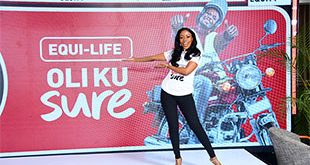
Facing the antibiotic resistance crisis
| THE INDEPENDENT | While medical research has helped us overcome many health threats, we now face a new type of crisis: Many dangerous bacteria are becoming resistant to the drugs meant to fight them. Where do we go from here? What is the state of the antibiotic resistance crisis?
Healthcare professionals frequently use antibiotics to treat many forms of bacterial infection — from those that are mild to those that are potentially life threatening.
These bacteria-fighting drugs first became widely used in the early 20th century, though some medical historians argue that natural antibiotics featured in traditional therapies as early as 350–550.
For the most part, antibiotics have proved to be a crucial ally in the fight for health, but over the past few years, these drugs have begun to lose their footing in their confrontation with bacteria.
This is because more and more bacterial strains are developing antibiotic resistance — they are no longer affected by the drugs that once suppressed their growth and activity.
This means that many bacteria have become more threatening because we have fewer means of offsetting them.
When a doctor finds that a bacterial infection is not responding to traditional antibiotic treatment, they are forced to use stronger, more aggressive antibiotics or antibiotic combinations — an increasingly restrictive approach that can also bring about unwanted effects on health.
So how did we get here, and are things quite as bad as they seem? More importantly, what can doctors, researchers, and the public do to address the ever-growing issue of antibiotic resistance?
A growing health crisis
Only recently, the Centers for Disease Control and Prevention (CDC) released a report reviewing the newest data on antibiotic resistance.
From the very first page, they make it clear that we are facing an important threat — the CDC dedicate this report to “the 48,700 families who lose a loved one each year to antibiotic resistance or Clostridioides difficile, and the countless healthcare providers, public health experts, innovators, and others who are fighting back with everything they have.”
The situation is dire indeed: According to the newest data, more than 2.8 million people in the United States experience an infection from antibiotic resistant bacteria each year. Moreover, these “superbugs” cause 35,000 deaths per year in the country.
This threat is by no means new. It has persisted over the years, as Dr. Jesse Jacob — a specialist in bacteria resistant to multiple drugs, from the Emory Antibiotic Resistance Center at the Emory University School of Medicine, in Atlanta, GA — has told Medical News Today.
“[The] CDC released the first antibiotic resistance threat report in 2013, so this [situation] is not new,” Dr. Jacob told us.
Although, he added, “Since the first report, the number of deaths due to these infections has declined […] CDC has updated the estimated number of infections with antibiotic resistance per year from 2 million to nearly 3 million.”
The fact that so many bacteria are not responding to first- or even second-line treatments means that people with these infections face much higher risks and poorer health outcomes.
“Antibiotic resistance has long been a problem, but the threats we face are real, immediate, and demand immediate action. Antibiotic resistance threatens modern medicine — our ability to safely perform routine surgeries and complicated organ transplants, as well as chemotherapy, all rely on the ability to prevent and treat infections,” said Dr. Jesse Jacob.
Consistent antibiotic overuse
“Antibiotic resistance is not only a U.S. problem — it is a global crisis,” the recent CDC report states. But what has led to this problem reaching a crisis point?
The answer to that question is complex, according to a review featured in the journal Pharmacy and TherapeuticsTrusted Source. The first and perhaps most obvious cause of antibiotic resistance is the misuse and overuse of these drugs.
Some people mistakenly believe that taking any kind of antibiotics acts as a sort of panacea, and they use these drugs to treat illnesses such as influenza. However, antibiotics can only target and kill bacteria and thus only treat bacterial infections.
Antibiotics are powerless against influenza and other illnesses caused by viruses. So when someone takes antibiotics for the wrong illness or uses too many too often, this kills off helpful bacteria that populate the body, threatening the delicate balance upon which health depends.
Moreover, bacteria are naturally prone to evolve and mutate, and some bacterial strains have, over time, found ways to adapt so that certain antibiotics will not affect them.
When we take antibiotics at the wrong time or if we overuse them, this allows resistant bacteria to take over more easily — to spread and multiply, sometimes giving rise to further strains of antibiotic resistant bacteria.
In the U.S. and other countries around the world, pharmacies are not permitted to sell antibiotics to people who are unable to produce a prescription. Nevertheless, studies suggest that many people are still able to purchase these drugs without official recommendations from their doctors.
Additionally, some research has shown that doctors sometimes mistakenly prescribe antibiotics or prescribe the wrong type of antibiotic, which has likely contributed to the current health crisis.
According to one study paper, 30–60% of antibiotics that doctors prescribe to people in intensive care units are not necessary.
 The Independent Uganda: You get the Truth we Pay the Price
The Independent Uganda: You get the Truth we Pay the Price



